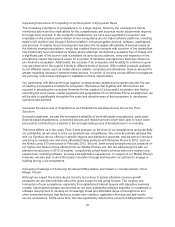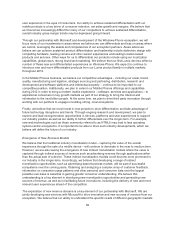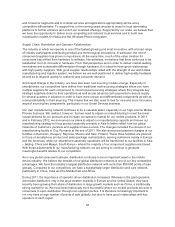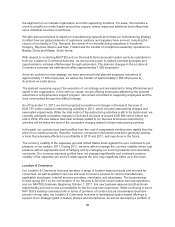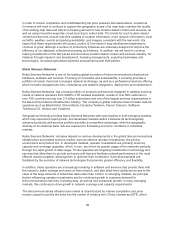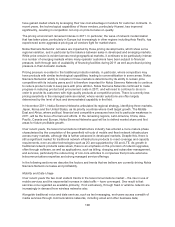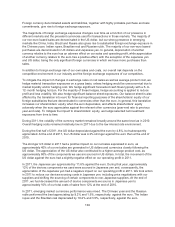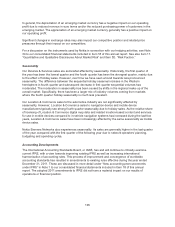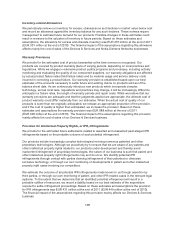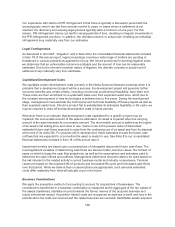Nokia 2011 Annual Report Download - page 103
Download and view the complete annual report
Please find page 103 of the 2011 Nokia annual report below. You can navigate through the pages in the report by either clicking on the pages listed below, or by using the keyword search tool below to find specific information within the annual report.entertainment services, including games and music; visual media, including high definition films and
television programming; and social media sites. End-users increasingly expect that such services are
available to them everywhere, through both mobile and fixed networks, and a wealth of new devices,
optimized to allow them to do so, have become available including tablet computers, highly
sophisticated multimedia smartphones, mobile broadband data dongles, set-top boxes and mobile and
fixed line telephones.
The widespread availability of devices has been matched by a proliferation of products and services in
the market that both meet and feed end-user demand. These continue to drive dramatic increases in
data traffic and signaling through both mobile access and transport networks that carry the potential to
cause network congestion and complexity. During 2011, this increase continued to gain momentum as
more users moved towards smartphones and tablets and even more devices that require constant
connectivity were introduced to the market.
While the growth in traffic is clear, it has not been met by corresponding growth in operators’ revenues
from data traffic, where growth appears to be slowing. This presents operators with a challenge: to
cope with the growing traffic load within networks, it is fundamental that operators continue to invest in
their networks, but within the financial constraints that their current business models dictate.
This means that while the addition of capacity, speed and coverage is crucial, it is critical that networks
are built efficiently and effectively in a manner that optimizes capital investment and delivers networks
with architecture sufficiently flexible to cope with evolving requirements.
During 2011, Nokia Siemens Networks recognized the centrality of mobile networks to the future
development of telecommunications and announced that it would place mobile broadband at the heart
of its strategy, articulating an ambition to provide the world’s most efficient mobile networks, the
intelligence to maximize the value of those networks and the services capability to make all elements
work together seamlessly. Nokia Siemens Networks said it expected to increase investment in mobile
broadband.
Also during 2011, Nokia Siemens Networks launched the network architecture designed to equip
operators to meet the challenges they are facing. “Liquid Net” architecture provides flexibility across
networks to adapt to changing customer needs instantly, using existing resources more efficiently. This
optimizes capital investment and allows operators to seek new revenue opportunities. Liquid Net uses
automated, self-adapting broadband optimization to remain constantly aware of the network’s
operational status, as well as the services and content being consumed, to ensure the best user
experience. Liquid Net consists of three areas: Liquid Radio, Liquid Core and Liquid Transport.
Managed Services and Outsourcing
There has been an acceleration in the development of the managed services market as operators
increasingly look to outsource network management to infrastructure vendors. The primary driver for
this trend is that managed services providers are able to offer economies of scale in network
management that allow the vendor to manage such contracts profitably while operators can reduce the
cost of network management. The outsourcing trend is also underpinned by many operators taking the
view that network management is no longer either a core competence or requirement of their business
and are increasingly confident they can find greater expertise by outsourcing this activity to a trusted
partner that can also improve quality and reliability in the network.
Nokia Siemens Networks believes that this trend will continue and that it could in future be driven by
financial imperatives of its customers facing slowing revenue growth but a continuing requirement for
capital investment in their networks, a dynamic that has the potential to threaten their profitability
101


